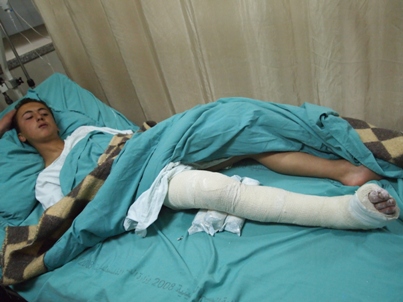Category: Reports
-
Live ammunition fired at Deir Jarir demonstration against land grab and settler violence
17th May 2013 | International Solidarity Movement, Team Nablus | Deir Jarir, Occupied Palestine The village of Deir Jarir today, 17th May, held its fourth consecutive weekly demonstration to protest Israeli land grab and settler violence against its villagers. The rally was violently suppressed by Israeli forces, who shot large amounts of tear gas and…
-
New women’s center hosts educational Nakba commemoration event
17th May 2013 | International Solidarity Movement | Asira Al-Qibliyyah, Occupied Palestine Team Nablus A new women’s center in Asira Al-Qibliyyah hosted an event for women and children in commemoration of the 65th anniversary of the Nakba, or “catastrophe.” Local women and children watched a short video of a Palestinian woman from Al-Kahlil (Hebron) speaking…
-
13 year-old boy shot and beaten by settlers, leg broken
16th May 2013 | International Solidarity Movement, Team Nablus | Qaryut, Occupied Palestine At about 2pm on 16 May, a 13 year-old boy was shot at and beaten by settlers; he broke bones in his leg running from the shots at him and from being beaten. After falling, the boy was threatened with his life…

